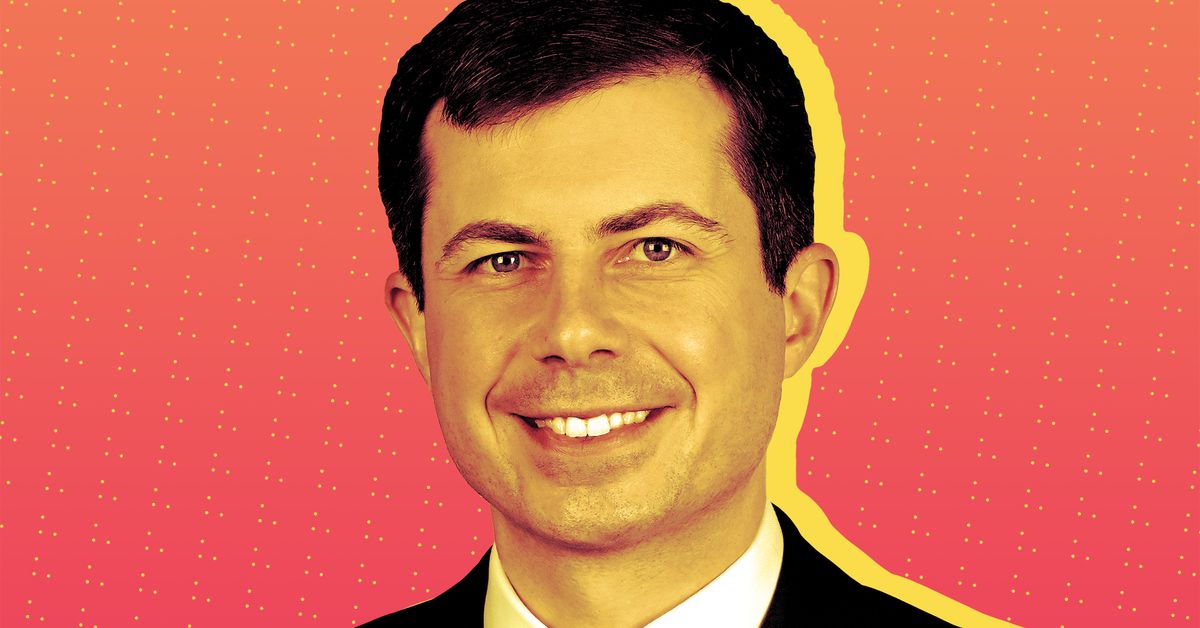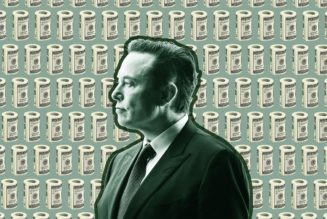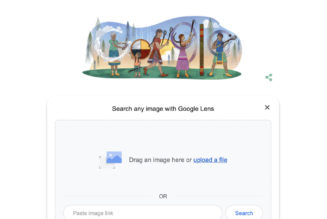
It’s something of a tradition for the US secretary of transportation to address the annual Consumer Electronics Show in Las Vegas and talk about all the ways that the government hopes to foster innovation in technology and transportation. This year, despite surging cases of omicron putting a damper on the show, Pete Buttigieg held up the tradition, delivering a virtual speech outlining his department’s new innovation principles.
2021 was an eventful year for Buttigieg, the youngest and arguably the most notable person to take on the role of transportation secretary in many years. Congress passed President Joe Biden’s $1 trillion infrastructure plan, which will provide billions of new funding for the creation of a national network of electric vehicle charging stations.
Buttigieg will have some say in how those billions of dollars get spent. He also has regulatory oversight of a rapidly changing auto industry, where electrification and automation are upending decades of transportation habits in the US. And he has to make sure those new technologies are rolled out safely and effectively, against the backdrop of rising carbon emissions and a spike in reckless driving and traffic fatalities.
And of course, we had to talk about Tesla, the company responsible for two-thirds of all EV sales in the US and the one that’s most aggressively pushing the promise of self-driving cars — despite not actually selling any self-driving cars. Biden doesn’t like saying the “T-word,” and as you can see from our discussion, neither does Buttigieg.
So here’s Pete Buttigieg, secretary of transportation.
Secretary Pete Buttigieg, welcome to Decoder. I wanted to start by asking you about these innovation principles that you’re announcing at CES. What are they? Why do you think they’re important? Why should people care about a government agency’s “innovation principles?”
You can’t separate transportation from innovation. As our department is making decisions about the future of transportation, the idea is to make sure that we’ve codified the principles that are going to guide us. Folks in our department have been working on innovation since the department was created. Some of these things are principles that have been unspoken for a very long time, but I think it’s very important for us to take a step back and take stock about what matters to us most when it comes to innovation. Otherwise, there’s always a risk of innovation being confused with technology. They’re not the same thing. We’re also trying to avoid technology as an end in itself, which is why the very first principle we’ve laid out is that our involvement in innovation is supposed to serve and support public policy priorities.
Some of the things we care about are: helping people get to where they need to be, making sure that people live in a way that is prosperous on equitable terms, dealing with the climate crisis, and supporting good-paying American jobs. These are things we care about in general, so it follows that these should be some of the priorities that guide our choices when we’re getting involved in the innovation space.
Competitiveness for America in the 21st century is another important one for us. We are at a crossroads in terms of American leadership. A lot of times, competitiveness is talked about in geopolitical terms, but it’s just as true in terms of transportation, technology, and innovation.
Our support for workers is another priority: ensuring that this is not about technology that comes at the expense of workers, but rather empowering workers. How can we make workers more effective, more successful, and even more productive in ways that benefit the economy as a whole?
We have a principle here about allowing experimentation and learning from failure. This is so elemental in the tech space that it might be questioned why we would even put it down, but it can be a little bit foreign in the government space, where failure is often not tolerated, even though it’s clearly in the experimental context. Failure is a necessary part of how innovation happens. We’ve got a principle that lays out how important collaboration is — the fact that it’s not just the public sector, just the private sector or just the academic sector that drives innovation, but how those sectors relate to each other.
Lastly — but importantly — we’re prioritizing being ready to adapt, to be flexible, and to evolve. Again, not something that is second nature, especially for a regulatory agency. Regulation is a big part of what the DOT [Department of Transportation] does, but we obviously need to be adaptable because the technologies are literally changing faster than we can rewrite some of our own plans and rules around them.
I definitely want to discuss that last part because it is really important. Before we do that, though, I wanted to ask you about the ways that you feel the recently passed infrastructure law will help foster innovation. Last I checked, there isn’t a lot of wiggle room when it comes to filling potholes or building bridges or updating sewer systems. Can you give us just some examples of ways you think that these innovation principles will dovetail with the new infrastructure law?
One definite example is the deployment of a nationwide network of electric vehicle chargers. It’s a good example of the role of the government: we don’t need to invent a new electric vehicle charger. The private sector has come up with a lot of versions of it. We don’t even need to deploy electric vehicle chargers ourselves single-handedly in a network that’s owned and operated by the government. Again, the private sector is there for that, but we have a very important role to play in terms of making sure that a network is laid out across this country for everybody; that this infrastructure isn’t just in the most immediately profitable places, but also in the places that, collectively, add up to eliminating range anxiety for any American anywhere who is weighing whether to buy an electric vehicle.
That means filling in for market failures. It means accelerating market processes. It means using the purchasing power and guidelines that are available to the federal government to encourage made-in-America components and facilities to thrive in the EV charging space. It’s a great example of where you need this handshake between public and private — not in order to make sure that a technology exists, but in order to help make sure that the way that technology unfolds is the most beneficial to the American people.
Will this involve pressuring private companies to put EV chargers in places that may not necessarily result in the biggest financial return, but will help the more equitable distribution of chargers so that the United States can build a more robust infrastructure overall?
When you want a company to do something that’s not in their shareholder interest, there’s got to be more to the picture than pressure. That’s why this is about using billions of dollars to achieve that outcome, but we’re not going to just use those dollars to incentivize something that would’ve happened anyway, to pad profitabilities that would exist regardless. So, yes, it’s about smoothing that picture. Right now, you can make a buck putting an electric vehicle charger in a lot of places in the US, but those places might not make the biggest difference in terms of our development into an EV country. Or in terms of our public policy goals, which include making sure low-income people can access them. Low-income people — provided they can afford an EV — would benefit the most, because they can have the fuel savings.
It’s a different pattern of use than you might expect. Rural residents are often left out of a lot of technology developments, but because they are more likely to live in a single-family home, they are more likely to have at least part of the charging issue solved: a plug in your wall at home is how you can charge your car. That solution is actually less available to city residents. Some other things are harder for rural residents compared to city residents, like the long distances rural residents have to cover. It’s an example of the Department of Transportation figuring out how we can use our policy tools to ensure a good public outcome, even while there’s a lot of market activity.
Over time, you want to organize yourself out of a job, as the saying goes. We want to get to where less and less policy intervention is needed for the good outcome to happen. The EV charging network is one example, but there are others where we do have a role in basic research. You mentioned that there’s only so many ways you can fill in a pothole, but actually — and I have a bit of an obsession about this — we could be doing a lot more to drive adoption of pavement that lasts longer. Unfortunately, there’s not a lot of market incentives, or, frankly, even policy incentives, for the people who make these choices day-to-day, like mayors or state DOTs, to pay a premium for an asphalt that’s going to last 13 years instead of nine in a Midwestern winter. We should be federally funding basic research like that because it probably won’t happen otherwise.
I see. I asked about potholes because I knew you were going to “but actually” me on it, so I set you up for that. Thank you for taking the bait.
Going back to the EV charging question: the bipartisan infrastructure deal will provide $7 billion for charging infrastructure. However, the other tax credits and consumer incentives are still tied up with the Build Back Better plan, which is in limbo right now. Are you making plans at the DOT level to come up with some other way to speed the transition from gas-powered vehicles to EVs, assuming that we won’t get those improved customer incentives?
Three things are really going to drive adoption. One is the charging support that we just talked about. The second is the incentives that we’re committing to try to deliver, hopefully through the Build Back Better framework, but whatever the vehicle, it’s an important public policy. Third is the developments that will happen anyway in the market. Of course, the worry is that the market forces won’t get there in time for us to meet our climate goals, which is why we’ve got to pour some accelerant on it. Now I should say — and I’ve noticed there’s been a little bit of confusion, almost to the point of misinformation, about this in the press — electric vehicles are increasingly moving toward a price point that’s available to more and more Americans. A widely cited figure is the $55,000 average price, but like many averages, there can be some mischief in those statistics because they include a lot of very high-end luxury vehicles.
Some of these pickup trucks coming onto the market start around $40,000, which is still out of reach for a lot of people, but that is more affordable than anything in this space would’ve been a few years ago. Our task is to make EVs affordable more quickly for more people, which is why we’ve proposed this incentive that would take more than $10,000 off of that price tag, moving it into the high 20s. More Americans would be able to afford these vehicles and reap the fuel savings that come with them. We’re not going to let go of this policy goal of reducing the upfront cost to electric vehicles, even while we pursue other initiatives that are going to make them easier to adopt.
That’s a really interesting point. We have seen the president testing out the electric Hummer and the electric Ford F-150. Those vehicles are presented as being the tip of the spear to more adoption. But, if you pull the camera back a little bit even more, there is an issue of car dependency in the United States: car dependency drives increases in carbon emissions and troubling increases of pedestrian road fatalities. How can you use your regulatory authority to pressure states to reduce car dependency? We hear a lot about the importance of electric vehicles, but we don’t hear as much about the broader problems that are associated with car dependency in the US.
Our lives are set up to revolve around our use of cars in so many ways. Our work starts from the principle that every means of transportation, including cars, should revolve around everyday life and what’s good for people, not the other way around. That is a challenge. We’re very excited about the developments that are happening with the automotive space becoming cleaner through electrification, smarter through automation, but cars are only one of many ways to get around.
I often say that you should be able to have options to get to where you’re going without having to drag two tons of metal with you in order to get there. This bipartisan infrastructure law is history’s largest ever federal investment in public transit, to create those kinds of options for people, and to get out of this idea that transit is something you’re stuck with if you don’t have a car.
That’s already true in many of our biggest cities, but we could do a lot more to make that the case and to make that equally true of bus transit as it is of subway or train transit. Then we ensure that it is safer and more convenient to get around on foot; encouraging active transportation and bicycle mobility. That begins with safety and making sure that people are safe when they’re getting around with those modes.
Some of this is about what we think of as the transportation piece. Some of this is about city planning and urban design. That’s one of the reasons why we can’t separate transportation policy from housing policy and land use policy. We have designed everything — down to the way our neighborhoods and cities unfold — in a way that almost pushes us into this car dependency, when we really could have a more balanced outlook. A lot of forward-thinking communities, cities, and states are planning that way already.
In some ways, these innovation principles reminded me a little bit of the voluntary guidelines that were released for automated vehicles under the Obama administration: a list of broad policies and principles that the government would like to see private companies adopt as they move more toward this technological innovation, self-driving cars. That’s one element of what the government can do to incentivize this innovation in the private sector. On the other hand is the enforcement angle. Companies like Tesla are really pushing the envelope about auto safety: having customers test out beta software. Is there more that the DOT, NHTSA [National Highway Traffic Safety Administration], and other government agencies should be doing in order to ensure that companies aren’t pursuing innovation, compromising our safety in the process?
The innovation agenda is the bleeding edge of what we’re doing as an agency, but the core of the DOT is safety. When I talk about how technology and innovation should serve our public policy priorities, a good example of that is our core mission around safety. That mission isn’t just about being excited about new things emerging that could be beneficial, but also a fundamental responsibility on the regulatory side. You are going to continue to see us take steps.
By the way, in the long run, this is to the benefit of industry in the same way that food service and restaurants are better off because America chose to establish public health regulations so you didn’t have to worry about food poisoning every time you ate outside of your home — or inside your home, for that matter. We need to make sure that people who are weighing how to navigate a world of automated vehicles know that there is some baseline of safety that’s been established by regulation.
The challenge for us is to adapt our framework for regulating these things in ways we’ve never had to. There’s an unofficial division of labor when it comes to vehicles and vehicle safety, which is that — and I’m simplifying a little bit, but I think this is a fair way to say it — the states regulate drivers and the federal government regulates cars. What are you supposed to do when the car is the driver? That’s an issue that we’re really just at the outset of managing. In a much narrower sense, even right now, we just had to rewrite some of our regulations on what should be true in terms of language that refers to a “driver’s seat.”
That process can take such a long time. As we’ve seen in the past, tweaking things like the Federal Motor Vehicle Safety Standards is a multiyear process that doesn’t seem to really account for the pace at which this technology is innovating. GM is announcing today that they’re going to start selling self-driving cars to customers by the middle part of the decade. We don’t even have vision tests for these cars yet. Do we need something like that? We test drivers’ eyesight, so should we be testing the perception software of these cars as well?
Potentially. These are exactly the kinds of things we need to really move more quickly as a government to deal with. We can’t let technology keep running out ahead of our policy or else one of two things will happen: either it emerges and it’s not safe, or it’s ready to emerge and is held back because we haven’t gotten around to finding ways to ensure that it’s safe. Both of those outcomes are bad, but also, we need to think at a deeper level than we have been.
Not to pounce on it, but your example about vision testing is a good one. There’s this idea out there that we’ve got to make sure that the vision or optical capabilities of AVs is as good as that of a human driver, but I don’t think that’s an acceptable standard. Human drivers kill about 35,000 people a year. We would never tolerate that with any kind of new product or technology, so it’s got to be better. It’s not the government’s job to decide whether the way to make it better is an even better optical approach or some other solution. These are exactly the kinds of things that researchers in the scientific and industry world will need to develop, not people like me. What we need to say is: “Here’s what a safe vehicle looks like. Here’s an acceptable standard of safety. Here’s what it takes to accept that these will be on American roads.” Then the race is on to define those principles and challenge industry to show that they can meet that standard.
Will that involve being unafraid to use the recall authority? Companies can fix potential defects in their vehicles through over-the-air software updates, bypassing the traditional recall process. Does that need to be updated in some way to account for how cars are — to use a cliche that’s been bandied about — essentially just smartphones on wheels? It seems like software updates could potentially present some issues for government regulators such as yourself.
If a model of a tire explodes when it’s not supposed to, that obviously triggers a recall due to a physical flaw. If there is a flaw in a piece of software that could have comparable consequences, we need to have a way to get ahead of it. That’s something that requires us to build fundamentally different capabilities than we’re used to having as an agency, but there’s no question that we need to be weighing these issues, not just for those purposes, but to prepare for a world where cybersecurity vulnerabilities are becoming more apparent and troubling. Up to this point, the approach has been hoping that private actors will give the government a heads-up when there’s a cyber issue. We must have a more robust way of dealing with these things.
You could hope that private companies will give you the heads-up. I don’t mean to continue to bring up Tesla, but I have to. They do seem to be an outlier in the auto industry in the way that Elon Musk thumbs his nose at regulators, whether it’s the SEC or NHTSA. Obviously, the government is investigating the incidents in which Tesla’s Autopilot crashed into emergency vehicles, but do you think that there needs to be a more broader look at that company, especially considering the unique role that they’re playing in the broader transportation sector?
Our decisions are based on outcomes. We will regulate any company based on whether their products are safe. We are taking steps now with NHTSA to make sure that we get the needed data about incidents that use some of this driver assistance technology. I keep saying this until I’m blue in the face: anything on the market today that you can buy is a driver assistance technology, not a driver replacement technology. I don’t care what it’s called. We need to make sure that we’re crystal clear about that — even if companies are not. Existing authorities will give us a lot to work with to keep drivers and passengers safe. We’re going to continue to use those in every responsible way and look for more running room where it’s needed.
It’s not about singling out any one company for praise or for scrutiny. It’s about ensuring that every single vehicle out there meets a basic standard of safety, so you don’t even have to wonder about it. You can worry more about the cool stuff like which features you want instead of wondering whether this vehicle can be trusted with your life and the lives of your children.
I wanted to ask you a little bit about trust in government: it seems to be at a low at this point in the country. There’s a feeling that the government’s not really working for people. Some of that distrust stems from the jobs that some government officials take after they leave public service; for example, a lot of folks who worked at the DOT under President Obama went on to join tech companies after they left the agency. Does that revolving door situation hurt the ability of agencies like yours to properly regulate the sector?
There are a lot of ethics rules that try to create a level of transparency around any relationship people have before, during, and after their time in government and in industry. We should always be ready to refine and improve those rules to make sure that there’s no question about what’s motivating people making decisions in public service.
At its core, the most important factor driving trust in government, up or down, is results. People trust government when it works for them and they mistrust government when they witness policy failure. The irony of being a safety agency at our core is that policy successes tend to be quiet. One fiery crash is a lot more visible than 100,000 that didn’t happen because we did our job. That’s by design. Part of me says that I want public servants to get more credit for keeping the public safe, but part of why we’re here is to worry about that stuff so you don’t have to. But there are other areas where clearly people have not seen policy success, including in transportation, largely as a consequence of the generational disinvestment that’s been going on through my lifetime.
That’s why we’re so excited about the bipartisan infrastructure law. It is an opportunity — not a guarantee — to deliver the kinds of quality infrastructural improvements that are going to make people feel better about the country, and feel better about the government that’s in charge of delivering it. It’s not an exaggeration to say that confidence in democracy partly depends on some very nuts-and-bolts stuff like whether we can deliver good, efficient, safe, modern ways for people and goods to get around.
This is the last question for you. You and your husband just became parents — mazel tov to that. Do you think your children will need to have driver’s licenses when they get old enough to have one? In the past, a lot of autonomous vehicle proponents would claim that future generations won’t need to have driver’s licenses. Now there’s some question as to whether or not those claims were maybe a bit premature. What are your thoughts on that?
I was thinking about that just the other day when I was looking at them in the morning. I mean, getting a driver’s license was such a big deal for anybody my age or older growing up. Driving is already a bit less of a thing if you talk to teenagers now because, among other things, rideshares have been so liberating for them.
My kids were born last summer. Fifteen years from now, getting a driver’s license will very much be an optional thing or a specialty thing. Now, that being said, I’m very mindful of the fact that the widespread use of automated cars has been “five years away” for at least the last decade in terms of the conversations that you see happening among the more breathless commentators.
For that to go through some kind of step change requires both policy and technology to evolve in a way that’s different than it has been. If electric vehicles are as big of a change — to use an analogy from aviation — as going from propellers to jet planes, then I think automated vehicles on the ground will be as big a difference as going from air travel to space travel. It’s clearly going to happen in a big way in our lifetimes. Trying to game out exactly when is a little harder for any of us to do well.
Many companies have gotten tripped up in the past when trying to accurately predict the future. It seems to be a moving target. Secretary Pete Buttigieg, thank you so much for joining us today. We really appreciate your time.
Thanks for having me on. Good seeing you.









